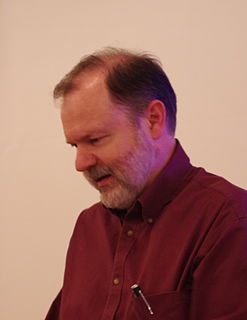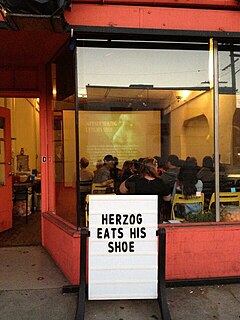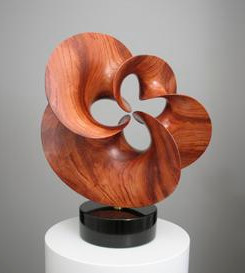
Lee Oscar Lawrie was an American architectural sculptor and a key figure in the American art scene preceding World War II. Over his long career of more than 300 commissions Lawrie's style evolved through Modern Gothic, to Beaux-Arts, Classicism, and, finally, into Moderne or Art Deco.
Public art is art in any media whose form, function and meaning are created for the general public through a public process. It is a specific art genre with its own professional and critical discourse. Public art is visually and physically accessible to the public; it is installed in public space in both outdoor and indoor settings. Public art seeks to embody public or universal concepts rather than commercial, partisan or personal concepts or interests. Notably, public art is also the direct or indirect product of a public process of creation, procurement, and/or maintenance.

Southern California Institute of Architecture (SCI-Arc) is a private architecture school in Los Angeles, California. Founded in 1972, SCI-Arc was initially regarded as both institutionally and artistically avant-garde and more adventurous than traditional architecture schools based in the United States. It consists of approximately 500 students and 80 faculty members, some of whom are practicing architects. It is based in the quarter-mile long (0.40 km) former Santa Fe Freight Depot in the Arts District in downtown Los Angeles and also offers community events such as outreach programs, free exhibitions, and public lectures.

Robert J. Lang is an American physicist who is also one of the foremost origami artists and theorists in the world. He is known for his complex and elegant designs, most notably of insects and animals. He has studied the mathematics of origami and used computers to study the theories behind origami. He has made great advances in making real-world applications of origami to engineering problems.

Eli Broad was an American businessman and philanthropist. In June 2019, Forbes ranked him as the 233rd-wealthiest person in the world and the 78th-wealthiest in the United States, with an estimated net worth of $6.7 billion. He was known for his philanthropic commitment to public K–12 education, scientific and medical research, and the visual and performing arts.

Daina Taimiņa is a Latvian mathematician, retired adjunct associate professor of mathematics at Cornell University, known for discovering a groundbreaking way of modelling hyperbolic planes by crocheting objects to illustrate hyperbolic space and innovative use of them teaching geometry.

The Arts District is a neighborhood on the eastern edge of Downtown Los Angeles, California in the United States. The city community planning boundaries are Alameda Street on the west which blends into Little Tokyo, First Street on the north, the Los Angeles River to the east, and Violet Street on the south. Largely composed of industrial buildings dating from the early 20th century, the area has recently been revitalized, and its street scene slowly developed in the early 21st century. New art galleries have increased recognition of the area amidst the downtown, which is known for its art museums.

April Greiman is an American designer widely recognized as one of the first designers to embrace computer technology as a design tool. Greiman is also credited, along with early collaborator Jayme Odgers, with helping to import the European New Wave design style to the US during the late 70s and early 80s." According to design historian Steven Heller, “April Greiman was a bridge between the modern and postmodern, the analog and the digital.” “She is a pivotal proponent of the ‘new typography’ and new wave that defined late twentieth-century graphic design.” Her art combines her Swiss design training with West Coast postmodernism.

Margaret Wertheim is an Australian-born science writer, curator, and artist based in the United States. She is the author of books on the cultural history of physics, and has written about science, including for the New York Times, Los Angeles Times, Guardian, Aeon and Cabinet. Wertheim and her twin sister, Christine Wertheim, are co-founders of the Institute For Figuring (IFF), a Los Angeles-based non-profit organization though which they create projects at the intersection of art, science and mathematics. Their IFF projects include their Crochet Coral Reef, which has been shown at the 2019 Venice Biennale, Hayward Gallery (London), Museum of Arts and Design (NYC), and the Smithsonian's National Museum of Natural History. For her work with public science engagement, Wertheim won the 2016 Klopsteg Memorial Award from the American Association of Physics Teachers and Australia's Scientia Medal (2017).

Machine Project was a Los Angeles based not-for-profit arts organization and community event space. Focused on the local community many considered Machine Project to be a Community museum. From 2003 until its closing in 2018, the Machine Project’s mission was to produce cultural programming that inspires audiences to become creatively active by engaging with and reimagining the arts and sciences in new ways. The Project utilized a range of techniques to encourage participation such as informality, humor, and surprises in order to make new, exciting and complex ideas accessible. From a storefront gallery in the Echo Park neighborhood, near the major intersection of Alvarado Street and Sunset Boulevard, Machine Project offered workshops, exhibitions, performances and talks all centered around the Los Angeles community. It is also a gathering place for a loose alliance of artists who produce collaborative work in various locations around Los Angeles, including the Santa Monica beach and the Los Angeles County Museum of Art (LACMA).
The Getty Conservation Institute (GCI), located in Los Angeles, California, is a program of the J. Paul Getty Trust. It is headquartered at the Getty Center but also has facilities at the Getty Villa, and commenced operation in 1985. The GCI is a private international research institution dedicated to advancing conservation practice through the creation and delivery of knowledge. It "serves the conservation community through scientific research, education and training, model field projects, and the dissemination of the results of both its own work and the work of others in the field" and "adheres to the principles that guide the work of the Getty Trust: service, philanthropy, teaching, and access." GCI has activities in both art conservation and architectural conservation.

Robert Longhurst is an American sculptor who was born in Schenectady, New York in 1949. At an early age he was fascinated by his father’s small figurative woodcarvings.
James Carter is a fringe theorist whose theory of "circlons" attempts to replace the existing theories of relativity, quantum mechanics, and the big bang theory with the idea that everything is made up of circular objects that interact in a mechanical way. His ideas are not the subject of serious scientific attention, although he has been studied by writers on fringe science and been the subject of exhibitions in Santa Monica, California and Los Angeles. Writer Margaret Wertheim called him "the Leonardo da Vinci of fringe theorists", and wrote a book about him, Physics on the Fringe. She also produced a documentary about him called It’s Jim’s World - We Just Live In It.
STEAM fields are the areas of science, technology, engineering, the arts, and mathematics. STEAM is designed to integrate STEM subjects with arts subjects into various relevant education disciplines. These programs aim to teach students innovation, to think critically and use engineering or technology in imaginative designs or creative approaches to real-world problems while building on students' mathematics and science base. STEAM programs add arts to STEM curriculum by drawing on reasoning and design principles, and encouraging creative solutions.
Los Angeles Road Concerts is an arts collective that exhibits site-specific performances, installations, readings, lectures, and carpool happenings shown in the numerous sections of ignored or disused public space that make up the sidewalks in Los Angeles. Six events have taken place since 2008, along San Fernando Road, Washington Boulevard, Sunset Boulevard, Mulholland Drive, in Downtown Los Angeles and Culver City. Over 300 artists have shown work in the events, which invited artists to submit through a wide call for submissions process in which no one is rejected. Past participating artists included Marnie Weber, Julia Holter, Elliot Reed, Ramiro Gomez Jr, Zackary Drucker, Kate Durbin, Christine Wang, Margaret Wappler, Fallen Fruit, Eric Lindley, Pau Pescador, Austin Young, Todd Gray, John Kilduff, West Hollywood city councilmember John D'Amico, Julie Tolentino, Marc Horowitz, Tangowerk, Sheree Rose, James Rojas, Margie Schnibbe and John Burtle. The collective was founded in 2008 by Stephen van Dyck.

Stephen Nowlin is an American curator/artist whose practice superimposes art and science and is associated with the national ArtScience movement. He is a vice president at Art Center College of Design and founding director of the college's Alyce de Roulet Williamson Gallery.
Jeannine Mosely holds a Ph.D. in EECS from the Massachusetts Institute of Technology, and is known for her work as an origami artist. She is best known for her modular origami designs, especially her work using business cards. She has organized several crowd-sourced origami projects built from tens of thousands of business cards involving hundred of volunteers for each project. She is also known for her minimalist origami designs, curved crease models, and her invention of "or-egg-ami" models made from egg cartons.

Margaret De Patta was an American jewelry designer and educator, active in the mid-century jewelry movement.

Doug Harvey is an artist, curator and writer based in Los Angeles. For 15 years he was a freelance arts writer and Lead Art Critic for LA Weekly and during his tenure there was considered “one of the most important voices on art in the city” by editor Tom Christie, "an art critic who is read all over the country, is smart, snappy, original, has an independent open eye, a quick wit, is not boring and never academic" by New York Magazine critic Jerry Saltz, and "a master of the unexpected chain-reaction of thought" by Pulitzer Prize winning LA Times critic Christopher Knight.















